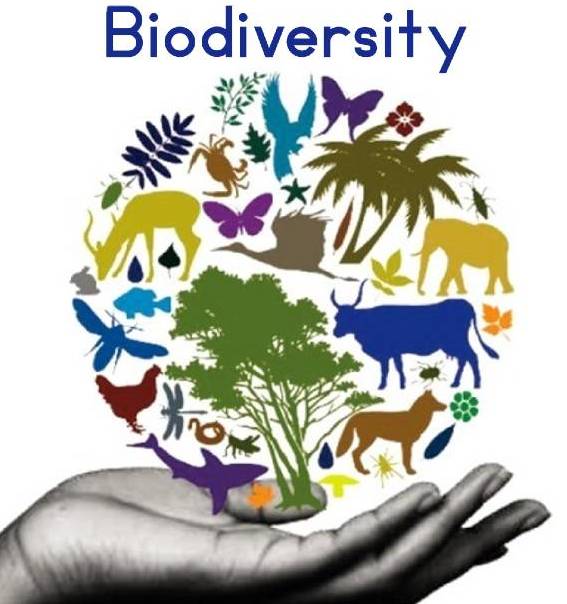
BY LAKACHEW ATINAFU
Ethiopia is one of the world’s biodiversity hotspots and home for various plant species that can be utilized as raw material for drug development and thereby step up county’s history in the field of medical industry.
In Ethiopia, particularly in rural areas, it is common for local people of different ethnic groups to utilize traditional medicines to heal various illnesses that afflict human beings and domestic animals with medicinal herbs.
Because, the country is blessed with varied climatic zones ranging from the highest altitudes to the places below sea level, the forests and home gardens are sources of medical herbs for herbalists.
This age-old practice and knowledge that passed down from generation to generation [to traditional healers] orally and through cultural practices gives remedies for the indigenous people to get relief from common ailments.
Traditional healers, mainly the elderly have the knowledge to treat and cure various illnesses- external and internal- using different medicinal plants with their indigenous knowledge. Deploying their indigenous knowledge, they treat and cure various internal and external illnesses such as repairing broken and fractured bones; treat headaches and various types of skin diseases, as well stomachaches associated with parasites, hemorrhoids among others.
Albeit the country has a botanical diversity and its own age old indigenous knowledge, there is yet limitation in developing and utilizing them to modern medication for various reasons.
According to studies conducted on the herbal sector, globally, the estimate of medicinal plant species ranges from 35, 000 – 50, 000 and out of this, about 4000 – 6000 species have entered the world market of medicinal plants
Upon a short stay with The Ethiopian Herald, Dr. Tesfaye Awas, Senior Researcher at the Ethiopian Biodiversity Institute (EBI) said that the Institute is working to step up country’s herbal medicine and the overall drug development through conserving and promoting sustainable use of medicinal plants.
In view of this, the Institute has played its part in developing country’s rich biodiversity potential with the establishment of Gene banks envisaging a mission to undertake study and research on the proper conservation of nation’s biodiversity potentials and associated indigenous knowledge; promoting participatory conservation mechanisms; ensuring fair and equitable access and benefit sharing plus stimulating sustainable utilization of biodiversity for sustainable development.
Referring to a research book published recently by the National Herbarium of Addis Ababa University under a title ‘The Flora of Ethiopia’, Dr Tesfaye said that in Ethiopia, there are about 6027 plant species of which 10 percent or about 600 are endemic to the country.
The Ethiopian varied climatic zone coupled with diversity of nation with a variety of culture made Ethiopia part and parcel for drug development.
So far, 30 percent of Ethiopian plants are being utilized by different society though the case needs further studies, said Dr. Tesfaye adding that 70 percent of medical plants are sourced from wild while the remainder are being grown at home gardens and farms.
Such opportunity and natural endowments are believed to be a great opportunity for PhD and MS students and scholars who are specializing in medicine and botanical research. The Ethiopian Biodiversity Institute has also put in place the preservation and nurturing of indigenous plants that are only found in Ethiopia. Apart from conservation of seeds in Gene Bank, the Institute has also been striving to preserve plants in Field Gene Banks which are hard of being preserved in Gene Banks.
As to Dr. Tesfaye, Field Gene Banks is one of the techniques in the strategy for plant genetic resource conservation. It is an ex situ method where genetic variation is maintained away from its original location and samples of a species, subspecies or variety are transferred and conserved as living collections. Field Gene Bank is the most common method of conserving genetic resources with recalcitrant seeds and vegetatively propagated plants.
Field Gene Banks are identified in the various agro ecological sites and they are located in Amhara, Benshangul Gumuz, Oromia, Sidama and Southern Nations, Nationalities and Peoples States. Planting materials and seed are distributed among farmers, traditional healers and researchers nationwide at the expense of the Institute, he added.
The Botanist has also said that Ethiopia has set clear national policy directives on conservation of biological resources. In the past, conservation efforts focused on plant genetic resources and priority was given to field crops.
Since 1998, the Institute was given a wider mandate of conservation and sustainable utilization of all forms of biological resources including plants, animals and microbial genetic resources as well as associated indigenous knowledge. Ecosystem management is also recognized as one of the areas to be given top priority.
“As to the importance of biodiversity and our dependence on biological resources, biodiversity conservation efforts give emphasis to local and national needs and values. The Institute, thus, has power and responsibilities related to conserving biodiversity and promoting the sustainable utilization of the resources.”
This includes maintaining and developing international relations with bilateral and multilateral bodies having the potential to providing technical and financial assistance. The Institute, on the basis of national legislation, has the responsibility and duty to implement international conventions, agreements and obligations on biodiversity to which Ethiopia is a party, it was stated.
In Ethiopia, ethno-veterinary medicine is also highly practiced by different local communities. The coverage is very high and the National Health Research document emphasized the importance of traditional practices and recommended research undertakings. In Ethiopia, medicinal plants are widely cultivated and utilized. According to empirics, a total of 134,541.97 hectares of land are covered by herbs and aromatic plants in states- Oromia, Amhara and SNNPS.
A large number of medicinal plants was documented and widely used to treat various human and livestock ailments in various parts of the country. However, these resources are under threat due to different reasons. For instance, Brucea antidysenterica, Cordia Africana, Cucumis ficifolius, Euphorbia abyssinica, Hagenia abyssinica, Ficus sur, Olea europaea subsp. cuspidata, Podocarpus falcatus, Millettia ferruginea, Myrica salicifolia and Withania somnifera, are highly threatened the resources, according to studies by Asmamaw and Achamyeleh.
Globally, the value of biodiversity as a key component of the environment was recognized during the build-up to the United Nations Conference on Environment and Development (UNCED) in Rio de Janeiro in 1992. Ethiopia endorsed, signed and ratified the Convention on Biological Diversity (CBD) in 1994. Since then, the Environmental Protection Authority took the lead as a focal point of CBD until 2005 and handed over to EBI, same year, after a thorough revision of the mandates and duties of the two institutions.
As studies indicate, Ethiopia has approximately 6,500 higher plant species. Of these, 12 percent are endemic; which ranks the country one of the six plant biodiversity rich countries of Africa.
The Ethiopian Herald March 25/2021




